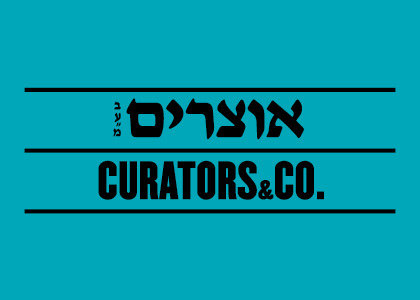Curators & Co.
dal 21/9/2011 al 10/1/2012
Segnalato da
21/9/2011
Curators & Co.
Petach Tikva Museum of Art, Petach Tikva
Spanning diverse mediums, including video, installation, painting, photography, sound, readymade, and text, the artists' works offer diverse references to the art world. The show, which was conceived as an umbrella exhibition, features 9 site-specific installations which reflects a specific curatorial approach. Curator Revital Ben-Asher Peretz gathered 9 Israeli curators with diverse agendas and approaches for a joint experimental project.

The exhibition "Curators & Co." inquires what curatorship is, turning the spotlight to curators and the essence of their work in the era of globalization and its impact on Israeli culture and its products. The contemporary art field is typified by a profusion of exhibitions, fairs, and spectacular events which draw tens of thousands of visitors each year. Taking art out of the museums, galleries, and private studios into the urban space and alternative exhibition venues offers the public greater exposure and unmediated encounter with visual art, raising awareness among audiences other than the ordinary art consumers. In such circumstances, the practice of curators, who are perceived as art's gatekeepers and agenda setters, has shifted from behind-the-scenes to the forefront of the art world.
Alongside the traditional perception of the curator's role as mediator between art works and the viewer, new curatorial practices have evolved, granting curators a major role in the artistic arena and considerable public exposure. At the same time, the traditional distinction between artist and curator gradually dissolves, partly due to the emergence of cooperative exhibition spaces operated by artists who also function as curators, thereby changing the balance of power in the field and introducing added complexity. Vis-à-vis these inclinations, the need arises to delve into the curators' cultural role and to explore relevant issues pertaining to the curatorial act and its derivatives.
The exhibition is based on a unique format. Curator Revital Ben-Asher Peretz gathered nine Israeli curators with diverse agendas and curatorial approaches for a joint experimental project underlain by a model of a curatorial chain (curator-curating-curator) and a long-term group work process. In the course of the project, which took approximately two years, each curator was asked to choose an artist or a group of artists who will implement a work of art which would best reflect his/her curatorial stance.
Concurrently, and as part of the integrative curatorial process, Ben-Asher Peretz, the curators, and the artists held regular meetings, as part of which a dynamic, open, and mutually-enriching intra-artistic discussion was held, a type of an art laboratory which enabled self-reflection and a pluralistic discourse regarding the curatorial act in the local social and political space.
Bringing together some of the leading curators now operating in Israel, the exhibition sets out to explore the uniqueness and role of the curator as a researcher, a representative of culture—in the local context, but also from a universal perspective. At the same time, it delves into various issues and aspects regarding curatorship and the art field in Israel 2011, among them: curator-artist relations, the curatorial act, hierarchies and power relations in the artistic scene, the curator's status, the notion of the creator-curator, the influence of curators on the discourse of culture and on trends and processes, and the motivations behind curatorial selections.
The show, which was conceived as an umbrella exhibition, features nine site-specific installations, each forming a small-scale exhibition which reflects a specific curatorial approach. As a whole, the project offers a broad spectrum of visual languages, tastes, and directions: the choice of a minimalist language alongside the preference for an extroverted spectacular style; engagement with the individual-personal dimension as opposed to confrontation of collective identity; the use of scientific technology versus adherence to material simplicity; inquiry into an ideological dimension alongside concentration on a visual facet. In addition, the exhibition discusses several unique curatorial practices, among them "Wall-less Curatorship," an alternative project by Ami Steinitz, who departs from the museum into Petach Tikva's urban-communal sphere, and "Readymade Curatorship" which is associated with Gideon Ofrat's figure of the creator-curator.
Spanning diverse mediums, including video, installation, painting, photography, sound, readymade, and text, the artists' works offer diverse references to the art world. Some turn a reflexive gaze at art itself and the arena in which it operates; some allude to the intricate artist-curator relationship; others focus on memory and historical, cultural, and communal contexts, and yet others charge the exhibition with irony, criticism, and self-humor. The artists' works are sometimes juxtaposed with a "curator's footnote"—a documentary video, a sound work, or a presentation of a "curatorial text" in a unique format. In these cases, the curators momentarily pop into the foreground, exposing themselves, their motivations and considerations. The exhibition thus offers a peek into the secrets of curatorship, granting a more accessible experience.
Petach Tikva Museum of Art
museum complex Yad Labanim
30 arlozorov St. pob 1, Petach Tikva 49100, Israel
Opening hours
mon. wed. fri. sat.: 10:00-14:00
tue. thu.: 16:00-20:00



